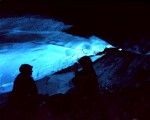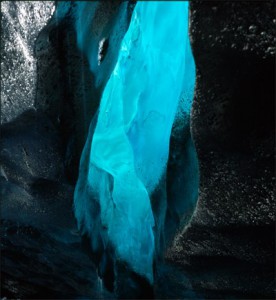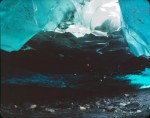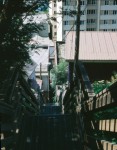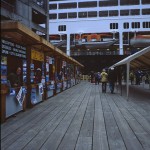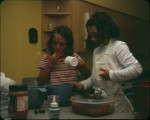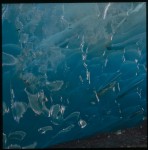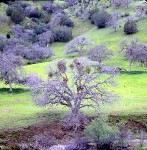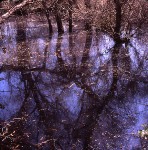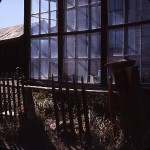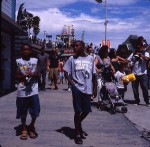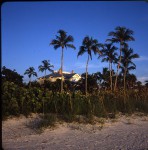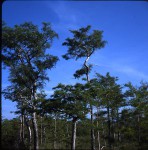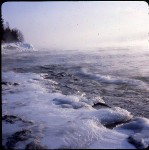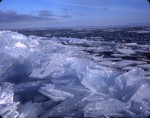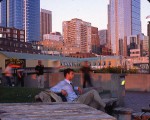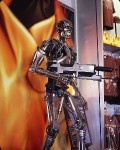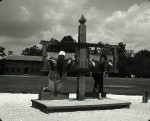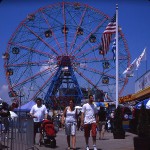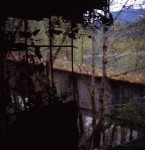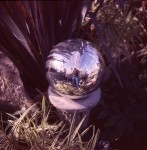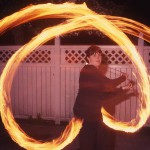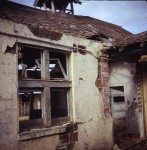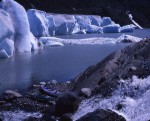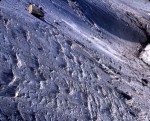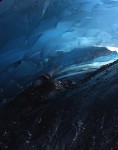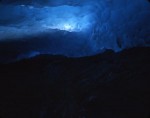This is my first effort with DR5 processing and 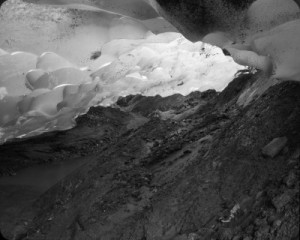 I’m extremely pleased with the results. I’ve been very happy with the sharpness I get with Provia 100, and reasonably happy with the sharpness with Provia 400x, but with Ilford HP5 at 400 I can see the grains of sand on the rocks. It is expensive to process, but I hope to shoot some more HP5 next year.
I’m extremely pleased with the results. I’ve been very happy with the sharpness I get with Provia 100, and reasonably happy with the sharpness with Provia 400x, but with Ilford HP5 at 400 I can see the grains of sand on the rocks. It is expensive to process, but I hope to shoot some more HP5 next year.
The cave below the Crack of Doom, persisted for at least three months. I first visited it in August. This image was made in October. The ceiling was higher and the space more open, but the cave was still there. This is almost the same vantage point as Streamside Snapshot. The rise in the very center of this image is off on the right side (and touching the ceiling) in Streamside.
Tripod mounted TL120-1, Ilford HP5 at ISO 400, DR5 processing
